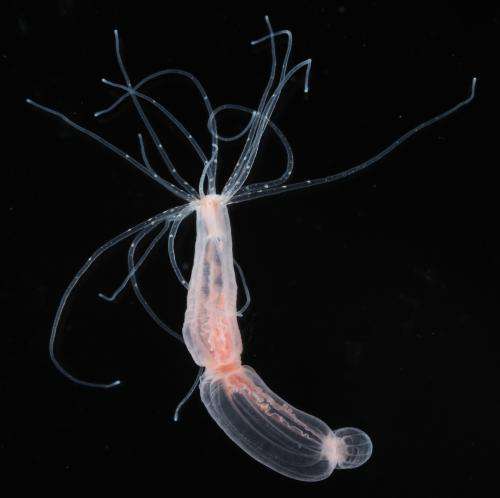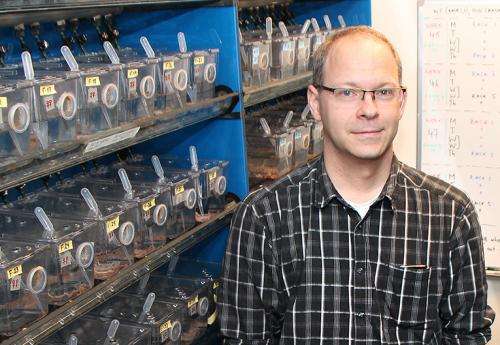Surprise gene finding on "back or belly" decision in sea anemones

A gene that controls one of the earliest decisions in the life of an animal, where to place the back and the belly on the body, is identified in a sea anemone by researchers in Bergen, Norway.
This fundamental process is called "dorso-ventral axis formation" by specialists. It takes place when animals are tiny embryos.
- Life is complicated even from the beginning, says researcher Fabian Rentzsch at the Uni research Sars Centre.
He made the new gene discovery in the sea anemone Nematostella vectensis together with his colleague Lucas Leclère, who is the first author of the study.
Many genes are required to decide where the back and the belly will be formed, but most of them are in addition used for other processes in the later life of an animal.
Leclère and Rentzsch at the Sars Centre studied a gene called RGM, (Repulsive Guidance Molecule) that is known to regulate how nerve cells connect to each other in chicken and mice.
Surprisingly, they found that this gene is regulating the "back or belly" decision in the sea anemone N. vectensis, as they write in the new article, recently published in the journal Cell Reports.
"This decision depends on the activation of a specific signalling molecule on only one side of the embryo", explains Leclère.
When the researchers blocked the function of RGM, this activation did not occur. What is even more surprising is that N. vectensis do not really have a back or a belly - the body of the sea anemone looks perfectly round on the outside.

"It was known that there are some subtle differences on the inside of the adult animal, but the back or belly decision is already made in the embryo, so we were wondering how this is connected. It turned out that particular internal structures, called mesenteries, always form first on one side of the embryo, opposite to the activation of the signalling molecule", Leclère says.
So there is no visible back or belly, but there are two different sides already in the embryo.
"When the function of RGM was blocked, these structures did not form and the animals remained round also on the inside. The signalling molecule that is regulated by RGM and decides about back or belly is the same in almost all animals, including humans", says Fabian Rentzsch,
"It will be interesting to see whether RGM tells our bellies where to form as well", he adds.
More information: Lucas Leclère, Fabian Rentzsch, "RGM Regulates BMP-Mediated Secondary Axis Formation in the Sea Anemone Nematostella vectensis," Cell Reports, Volume 9, Issue 5, 11 December 2014, Pages 1921-1930, ISSN 2211-1247, dx.doi.org/10.1016/j.celrep.2014.11.009.
Journal information: Cell Reports
Provided by Uni Research




















